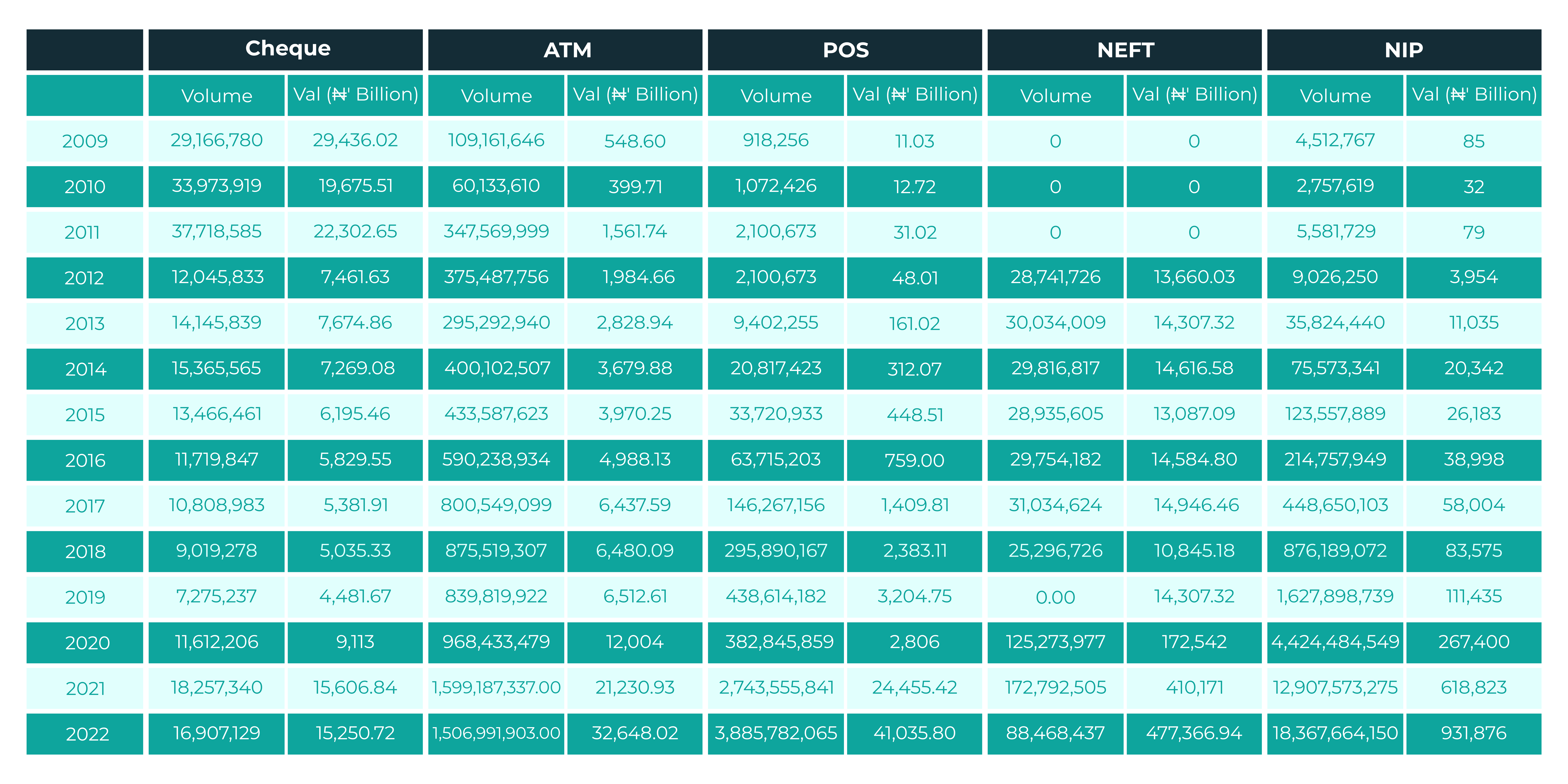
History of the Nigerian banking system
The introduction of electronic banking in Nigeria began in the 1980s, gaining traction with the emergence of banks referred to as “new generation” banks. Notably, the establishment of Diamond Bank Plc, equipped with online real-time “interconnectivity” capabilities, played a pivotal role in popularizing e-payment services nationwide. This development ushered in a new era of intense competition among banks, compelling them to adopt e-payment solutions to maintain their competitiveness and also put an end to the tally system in banks.
Prior to this era, banks adhered to a one-branch-per-customer model due to technological limitations. Account holders were restricted to conducting transactions solely at the branch where their accounts were opened. Other challenges in the ecosystem included lengthy clearing times for cheques and the disparity in clearing times between “up-country” and “local” regions. It’s worth noting that technologies we now take for granted, such as Electronic Funds Transfers (EFTs) and instant payments, did not exist at the time. The primary methods of payment and funds transfer were either through cheque deposits or in-branch cash payments across the counter.
One consequential outcome of the evolution of the banking system in Nigeria has been the significant increase in the number of individuals connected to financial services. Despite substantial growth in financial service adoption, it has not kept pace with population growth. Furthermore, over the last four decades, the number of commercial banks has steadily declined. This trend is primarily attributable to regulatory concerns rather than the adoption of technology.
1993
Implementation of MICR
1994
Establishment of NIBSS
2002
Full implementation and live operation of NACS
2002
Reduction of the clearing cycle to T+3 and T+5 for local and upcountry instruments, respectively
2003
Guidelines on e-banking
2004
Establishment of switching companies and interoperability of /shared ATM/POS
2005
Cheque Standard and Cheque Printer accreditation Scheme
2006
Implementation of RTGS System, T 24 eFASS and ERP.
2006
Establishment of National Central Switch
2008
Harmonization of clearing cycles (upcountry and local) at T+2 (Three working days)
2009
Issuance of Mobile Payment Regulatory Framework
2009
Guidelines on Transaction Switching
2009
Guidelines on Stored Value/Prepaid Cards
2009
Direct Debit Rules
2010
Migration to EMV Cards
2010
Guidelines on ATM Operations
2010
Nigeria Uniform Bank Account Number (NUBAN)
2011
Issuance of cash-less policy circular
2011
Issuance of Guidelines for card issuance and usage in Nigeria
2011
License of 6 PTSPs for deployment and maintenance of POS
2012
Commencement of charges on cash withdrawal/deposit above the cash-less policy threshold in Lagos
2012
Implementation of cheque truncation in Lagos
2012
Reduction of clearing cycle from T+2 to T+1 in Lagos
2013
Nationwide implementation of Cheque Truncation
2013
Reduction of clearing cycle to T+1 from T+2
2013
Setting of N150,000 limit on encashment of 3rd party cheques
2013
Licensed 10 additional PTSPs
2013
Deployment of new RTGS and Scripless Securities Settlement System
2013
Compliance monitoring with Payment Card Industry Data and Security Standards (PCI-DSS)
2013
Issuance of Guidelines for the regulation of Agent Banking in Nigeria
2014
Issuance of revised Guidelines for card issuance and usage in Nigeria
2014
Implementation of industry e-reference portal
2014
Abolished fees on cash deposit above the Cash-Less Policy threshold
2014
Sensitization Campaign On Cash-Less Policy in preparation of take-off of the cash-less
2014
Initiative in the remaining 30 states of the Federation
2014
Implementation of Bank Verification Number (BVN) Scheme
2014
Issuance of Guidelines on International Money Transfer Services in Nigeria
The role of technology in changing the ecosystem: (Internal and External contributors)
Innovation within the ecosystem and the industry has been driven by both external and internal factors. For instance, the establishment of NIBSS in 1993 led to the emergence of Electronic Fund Transfers (EFTs) and RTGS. Interswitch played a pivotal role in enabling the proliferation of ATMs and debit cards, among other advancements. Additionally, regulations facilitated the rise of fintech companies, which could provide services under licenses such as PSP, PSSP, PTSP, and MMO. This regulatory framework has had a significant impact on the payments industry.
Furthermore, the introduction of the PSB license allowed telecom providers to enter the arena of financial services, expanding the range of available offerings. Each new regulation, innovation, and transformation has contributed significantly to the growth of the ecosystem.
Moreover, as commercial banks expanded, Other Financial Institutions (OFIs) like Microfinance Banks (MFBs), Payment Service Providers (PSPs), and Financial Institutions (FIs) attempted to keep pace. However, differences in the volume of operations seemed to limit their growth potential. In addition to innovations within the ecosystem, the widespread adoption of internet-enabled portable devices and telephony connectivity has turbocharged the banking industry, involving non-bank actors as well.
Within the banking sector itself, one technology has revolutionized operations and significantly contributed to scalability and efficiency: “CORE” banking technology. Traditionally, banks operated using a physical ledger system, which resulted in slow-paced and fragmented banking experiences. Some banks started maintaining mainframes at various branches, but real-time interconnectivity was lacking, and transactions had to be reconciled at the end of each business day.
Then came CORE banking, with CORE standing for “Centralized Online Real-Time Environments.” The impact of this technology on the banking sector was profound. Core banking systems transformed the industry, improving the customer experience and triggering a series of transformations. Specifically, these systems ensured real-time transaction processing within a bank, regardless of geographic location. They standardized digital services and Know Your Customer (KYC) processes across bank branches, including the generation of account numbers. Furthermore, core banking technology significantly expanded the number of customers a bank could serve at any given time, leading to the emergence of “retail banking” and eventually “microbanking.” Importantly, it enabled real-time risk management and allowed for centralized and distributed reporting, compliance, regulation, and oversight.
The benefits of core banking systems were numerous, ushering in the digital age within banks. However, they were not without challenges. Firstly, core banking systems were often prohibitively expensive, representing one of the most significant IT infrastructure expenditures a bank could undertake. Secondly, they were complex, mission-critical solutions, and any compromise could potentially disrupt the entire organization’s operations. Thirdly, integrating multiple systems to communicate with each other could be a challenging endeavour.
Operations of Core Banking
At its core, Core Banking Systems replicate the ledger system of accounting used by banks. In essence, they provide a real-time record of all transactions, ensuring that credit entries match debit entries. As straightforward as this may seem, it’s actually an exceedingly intricate process. According to NIBSS, in 2022 alone, e-payments accounted for 5.2 billion transactions. When you factor in customer service inquiries, interest payments, charges, accruals, and more, the total number of transactions can easily reach hundreds of billions—a scale that was previously unimaginable, all made possible by the capabilities of core banking technology..
Impact of CBA on modernisation.
In 2010, NIBSS released a circular for banks to migrate to a standardized 10-digit account number system called NUBAN (Nigerian Uniform Bank Account Number System). Besides standardizing account numbers, it also significantly improved operational efficiency and accelerated the proliferation of Internet-enabled banking. Utilizing the CBN-ACH recommended logic, Commercial Banks (CBAs) could generate millions of new account numbers in a fraction of a second, in accordance with the requirements.
Channels such as mobile banking, web banking, and ATMs also witnessed substantial increases in volume after the implementation of NUBAN in 2011. Furthermore, it marked the introduction of mobile numbers as account numbers, using the same logic, which played a significant role in the proliferation of Mobile Money Operators (MMOs) and Payment Service Banks (PSBs).
The table shows the impact of modernisation in the banking and payments ecosystem, as can be seen, digital transactions have increased 1000% and cheques have dropped. Insert visualisation
Future-proofing the Ecosystem: A Justification for Cloud?
Historically, the cost of implementing Core Banking Applications (CBA) within any financial institution has been prohibitive. As previously mentioned, it ranks among the most capital-intensive and operationally rigorous projects a financial institution can undertake. Typically, banks establish dedicated CBA teams within their IT departments. Furthermore, the implementation architecture involves hardware components such as expensive databases, application servers, and backup systems that need to be operational 24/7. Additionally, it requires expensive, environment-specific software with costs running into millions of dollars.
However, in the early 2000s, a new wave of companies discovered a way to dramatically reduce the costs, equipment, and expertise needed for financial institutions to harness state-of-the-art banking solutions. One such pioneer was Qore. Back in 2008, when it was known as Appzone, Qore introduced an unprecedented innovation: a cloud-based core banking application. This was a game-changer because it allowed institutions to access CBA technology from the cloud, requiring next to no capital expenditure (CAPEX). This approach offered smoother learning curves, faster implementation times, more robust support, greater flexibility, lower operational costs, and an entirely novel pricing model.
With this innovation, over the next 14 years, more than half of the Other Financial Institutions (OFIs) in the country adopted this model, and the impact has been astounding. Suddenly, previously less technologically advanced institutions were providing their customer base with digital channels and instantaneous banking services. Moreover, with the disruptions brought about by COVID-19 in 2020, institutions utilizing cloud-based solutions demonstrated significant resilience as they could manage their business remotely. Furthermore, the cloud-based architecture allowed OFIs to cope with sudden spikes and extended surges in demand, such as the cash crunch experienced in Q1 2023, which posed severe challenges for commercial banks, leading to protracted downtime.
In recent years, major industry players like Flexcube and Temenos have actively started developing cloud-based solutions to cater to a new segment of agile and nimble customers. Nonetheless, the cloud implementation of core banking solutions does come with its set of challenges. These include concerns about data security, the risk of cyber fraud, the threat of unethical hacking, the potential for security breaches, vulnerabilities associated with unsecured APIs, the absence of data domiciliation, and regulatory pushbacks. However, it’s crucial to emphasize that these obstacles are not insurmountable. The industry is effectively addressing them through a combination of innovative solutions, advanced security measures, and proactive responses from financial institutions and regulatory bodies. Qore, for instance, has the PCI-DSS, ISO 27001 standardisation to remain ahead of the curve.
Summary
As the ecosystem undergoes transformation, cutting-edge technologies such as cloud-based core banking applications, Banking as a Platform (BaaP), Banking as a Service (BaaS), and Fintech 2.0 are poised to become the standard rather than the exception. To remain competitive, institutions must wholeheartedly embrace these technologies. Neglecting to do so could lead to a decline in value.
The banking renaissance in Nigeria and its expansion into Africa are being driven by technology. The astute integration of technology with operational excellence has ignited innovation at an astonishing pace and at the forefront are fintechs like Qore Technologies Limited who have been solving problems and shaping the narrative over the last 14 years.


Tomorrow is automated
Let’s discuss how our products can give your business the boost it needs.



